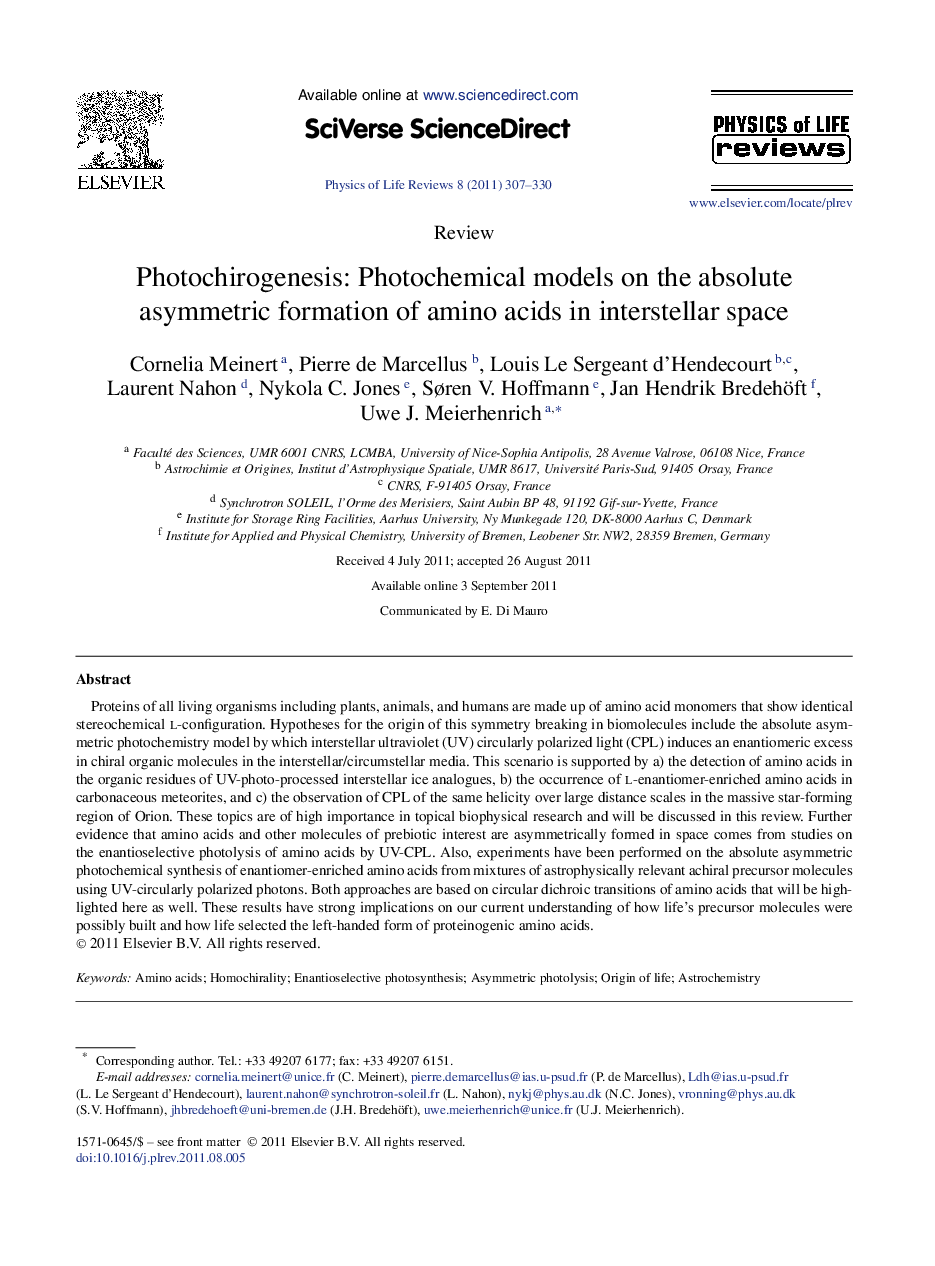| Article ID | Journal | Published Year | Pages | File Type |
|---|---|---|---|---|
| 1870991 | Physics of Life Reviews | 2011 | 24 Pages |
Proteins of all living organisms including plants, animals, and humans are made up of amino acid monomers that show identical stereochemical l-configuration. Hypotheses for the origin of this symmetry breaking in biomolecules include the absolute asymmetric photochemistry model by which interstellar ultraviolet (UV) circularly polarized light (CPL) induces an enantiomeric excess in chiral organic molecules in the interstellar/circumstellar media. This scenario is supported by a) the detection of amino acids in the organic residues of UV-photo-processed interstellar ice analogues, b) the occurrence of l-enantiomer-enriched amino acids in carbonaceous meteorites, and c) the observation of CPL of the same helicity over large distance scales in the massive star-forming region of Orion. These topics are of high importance in topical biophysical research and will be discussed in this review. Further evidence that amino acids and other molecules of prebiotic interest are asymmetrically formed in space comes from studies on the enantioselective photolysis of amino acids by UV-CPL. Also, experiments have been performed on the absolute asymmetric photochemical synthesis of enantiomer-enriched amino acids from mixtures of astrophysically relevant achiral precursor molecules using UV-circularly polarized photons. Both approaches are based on circular dichroic transitions of amino acids that will be highlighted here as well. These results have strong implications on our current understanding of how lifeʼs precursor molecules were possibly built and how life selected the left-handed form of proteinogenic amino acids.
► The ultimate cause of lifeʼs molecular one-handedness is still unknown. ► L-enantioenriched amino acids are detected in the interior of carbonaceous meteorites. ► Absolute asymmetric photochemistry might have induced this enantiomeric excess. ► Interstellar ice photochemistry simulated in the laboratory support this hypothesis.
